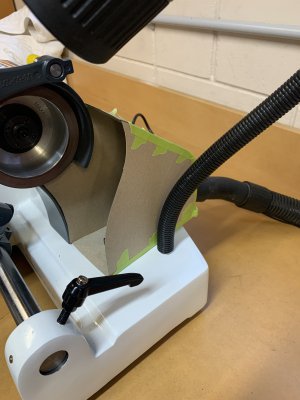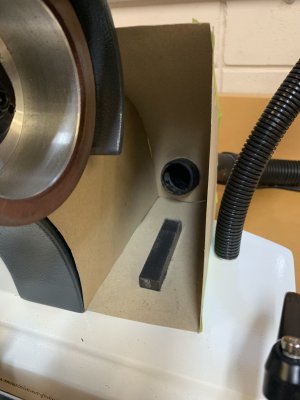I rarely use the AOx wheels because it seems like a lot of grit going every place. Not good for the machine or me. But the Diamond & CBN wheels still give off some. I'm not even sure it is cheaper to use the AOx wheels since they wear away a lot faster.
This brings up a point about what grit do you use. Diamond is offered in at least 3. 100, 120, 150. Just doing a touchup grind the 150 seems like the choice. But if there is a serious chip to be dealt with, a coarser wheel seems better. But then do you change wheels to get that shinny finish from 150 or just call 100 good enough?
On our profile grinder we never change grits, The wheel is dressed to shape and used at a slower RPM for the primary grind and then spun at a considerably faster rate for the secondary grind to get a finer finish. I think the wheels are 60 grit and give a very smooth finish. The secondary grind is at a less steep bevel and only about 1/32" wide. It is also at 90 degrees to the edge giving the strongest edge possible. Honing is not permitted as it will always affect the edge geometry. A very minor burr that occurs is wiped away with a piece of hardwood. Cutting wood @ SFM of about 11,000. (7" dia. x 3.14 x 6000 rpm/12.) DOC , 3/4"+-, feed rate assuming single knife finish (2 knife head) of about 40 -50'/min. This is on a small 5 head machine with only 20hp on the main profiling head.
I've done woodworking most of my life and there have been some minor differences when I started doing metal. Our primary saw is programed for one meter per second, I think! Our bore & insert machine drills, blows the dust out, injects glue, drives a dowel and moves to the next location in about 1.2 seconds. We use a very conservative 600"/ minute feed rate on the router. The bander @ 1'/second. These are all sort of slow compared to state of the art. Slowing down to manual metal machining has been -- difficult.



